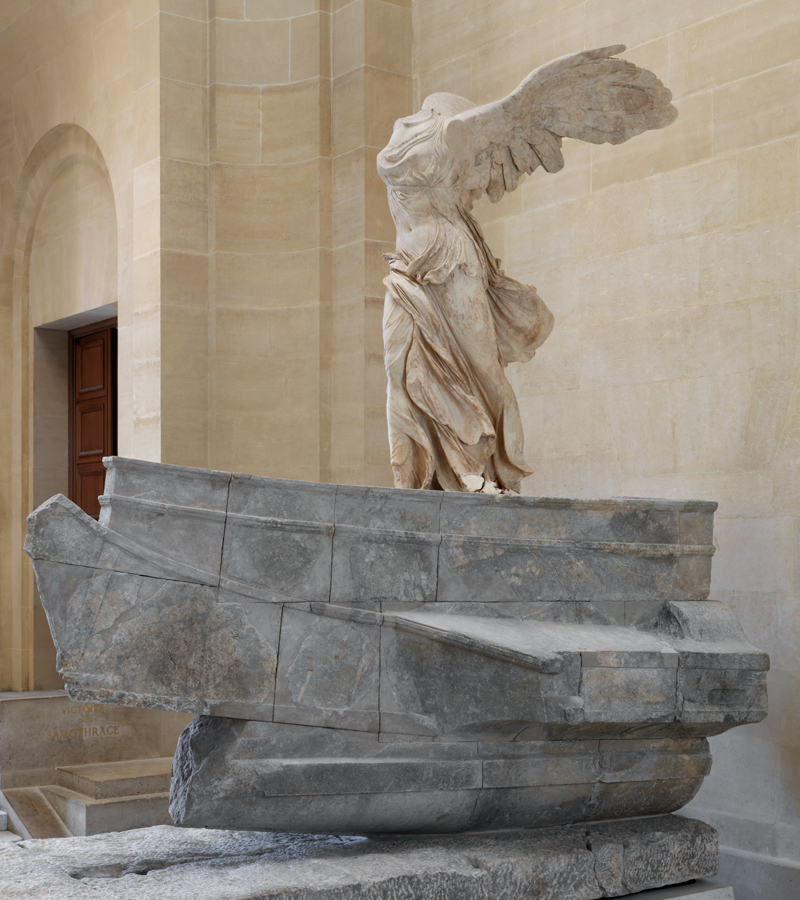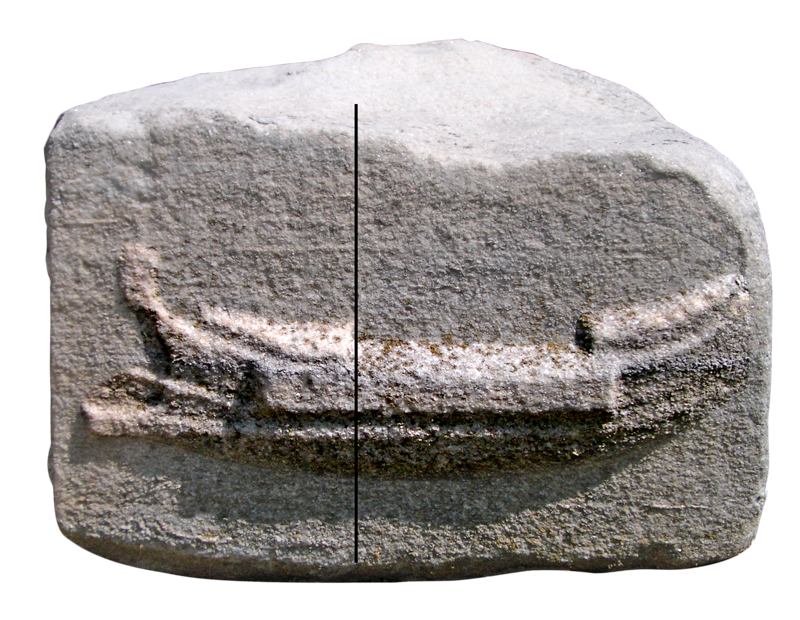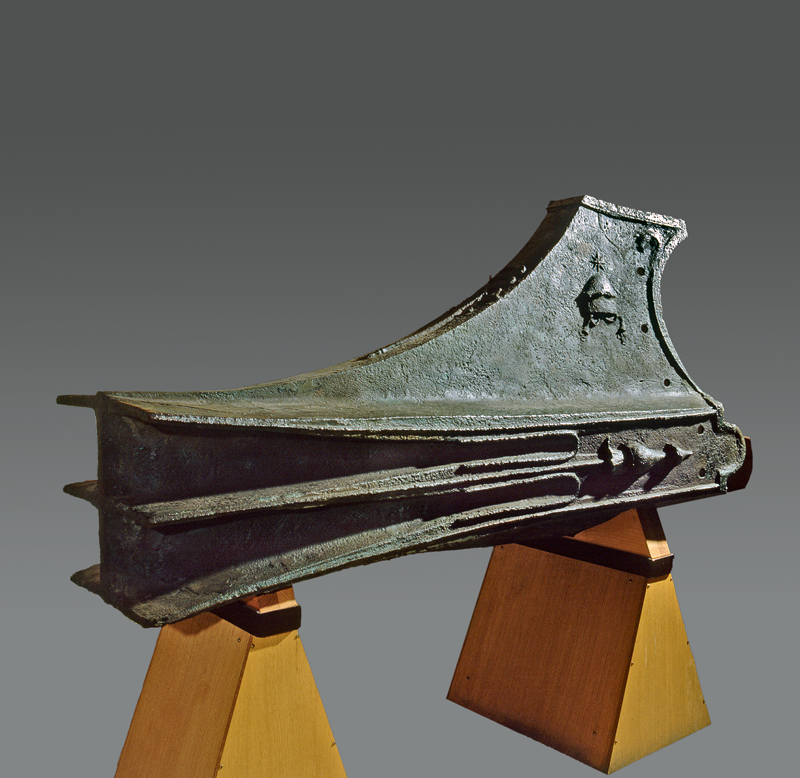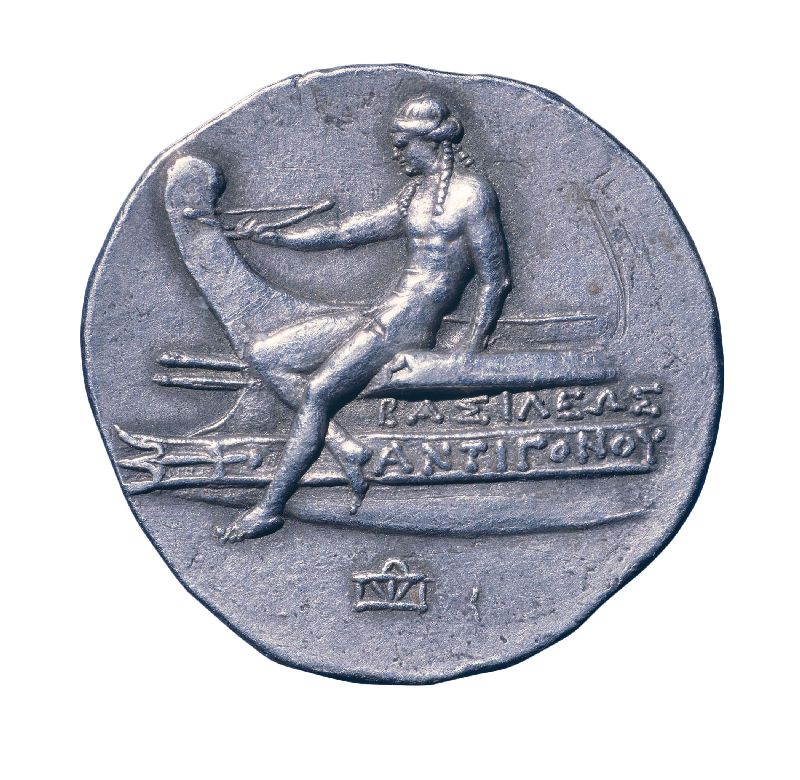A battleship
- The base of the Winged Victory of Samothrace depicts the prow of a battleship typical of the Hellenistic period and its developments in naval architecture.
Hellenistic low-relief carving: battleship,
3rd–2nd century BC, Archaeological Museum, Samothrace - The best-known of these developments was the addition of large oar boxes jutting from the ship’s sides. These wooden structures could support several tiers of longer, more powerful oars.
Mosaic from Palestrina (detail): battleship,
early 1st century BC, Museo Barberiniano, Palestrina - The main weapon on a Greek battleship was its great ram, attached to the waterline, along with a smaller ram higher on the stem. A bronze ram, 2.27 m (7 feet 4.5 ins) long and weighing 465 kilograms (1,025 lbs), found off the coast of Israel, shows what a terrible weapon this was.
Bronze ship ram found off Atlit,
2nd century BC, National Maritime Museum, Haifa - This kind of ram was sculpted on the base of the Winged Victory at the end of the keel block, as shown on a fragment from a less important naval monument conserved in the Archaeological Museum of Rhodes.
Marble ram,
2nd century BC, Archaeological Museum, Rhodes - The prow ornament on the tip of the ship’s bow is also missing, but contemporary coins and reliefs give an idea of its form.
Tetradrachm (four-drachma coin) showing Antigonus Doson: Apollo and ship’s prow,
after 227 BC (?), Paris, Bibliothèque Nationale de France -
Captioned drawing of the reconstruction of the ship’s prow, V. Foret






